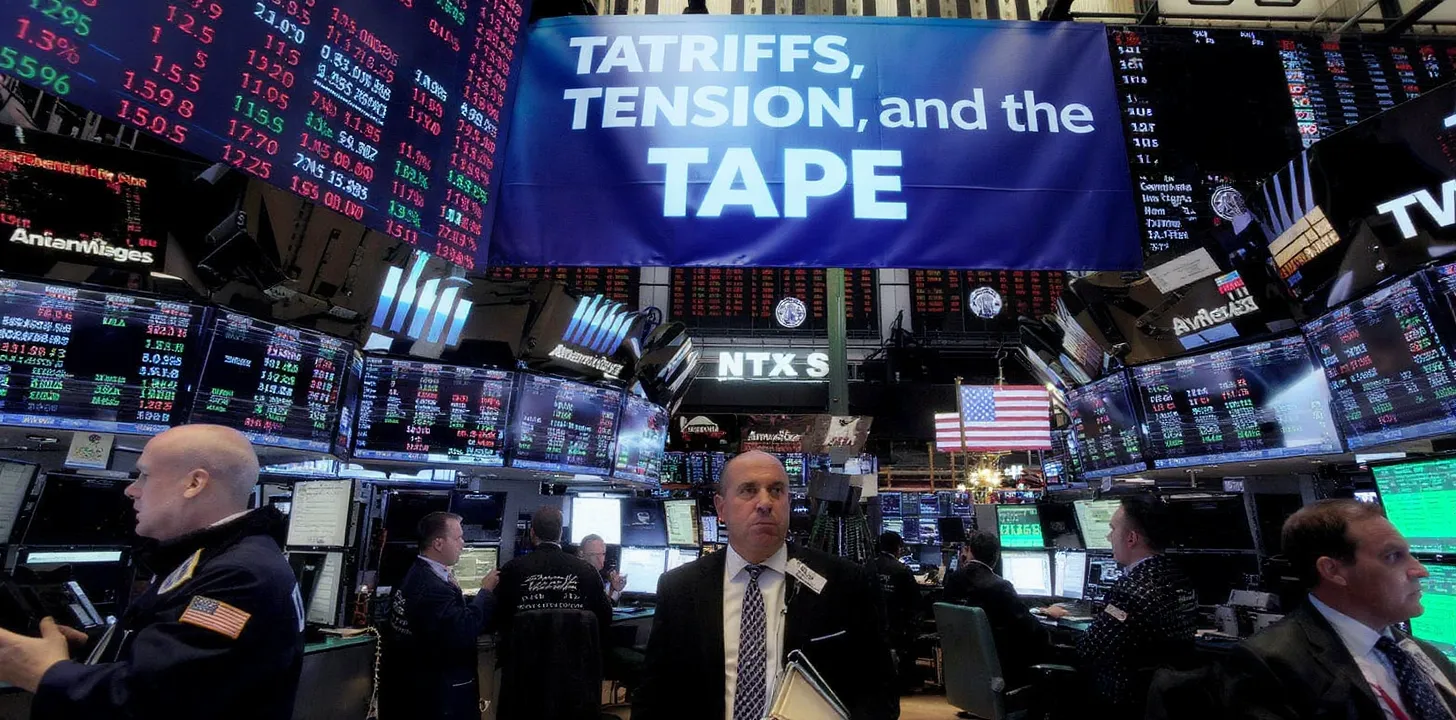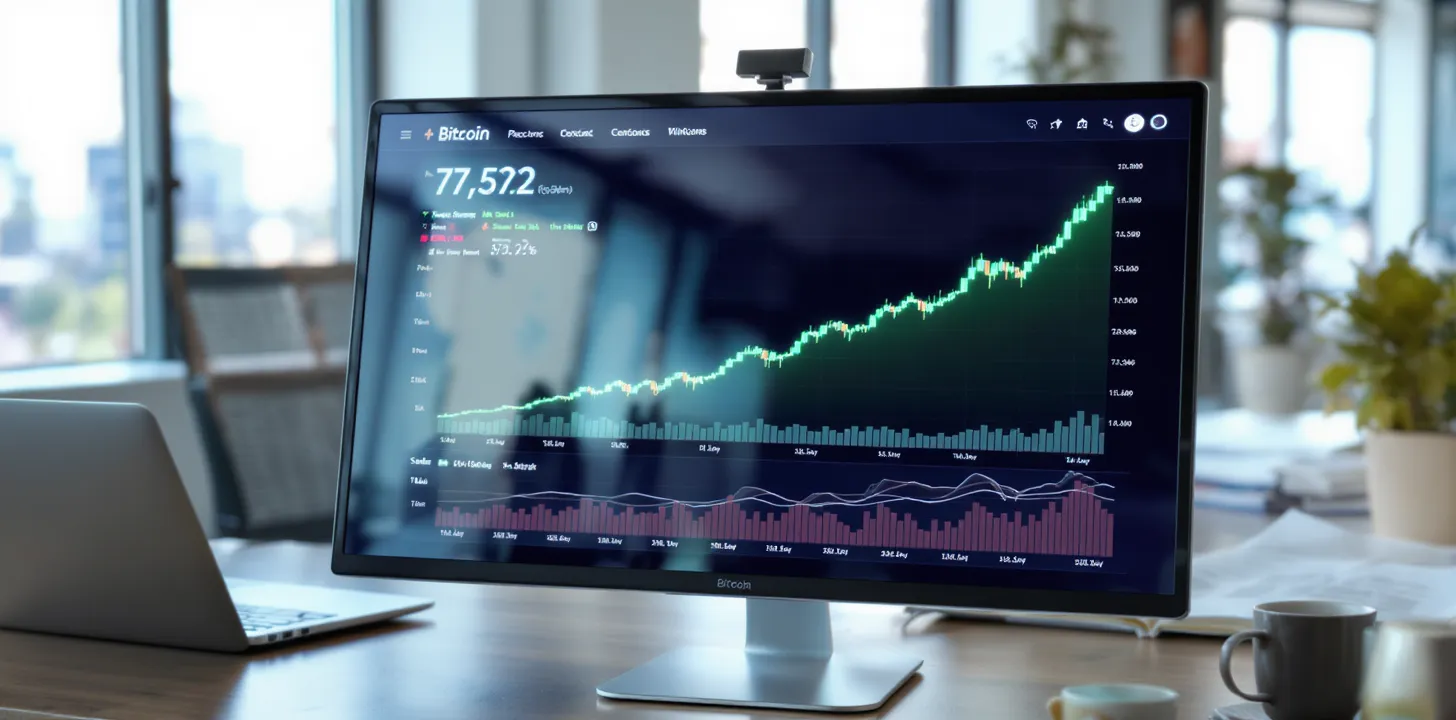The quick take
U.S. stocks suffered their sharpest one-day fall since April as a revived U.S.–China tariff escalation punctured weeks of low realized volatility and frothy tech sentiment. The S&P 500 fell about 2.7%, the Nasdaq 3.5%, and the Dow 1.9%. Option-implied volatility jumped back over 20, gold flirted with $4,000 again, oil broke to five-month lows, and crypto saw disorderly liquidations. The catalyst was political—but the move was fundamentally about positioning, valuations, and fragile macro liquidity.
What actually moved
- Equities: The S&P 500 −2.7%, Nasdaq −3.5%, Dow −1.9% close tallies the damage. Tech and semis led the losses; the Magnificent-Seven basket dropped nearly 4%, with heavyweights like Nvidia, Amazon, and Tesla underperformed.
- Volatility: The VIX spiked above 21 for the first time in months—an abrupt reset from the complacent mid-teens regime that prevailed through late summer. The options market repriced tail risk, but remained orderly (bid/ask and skew steepened, not panicked).
- Rates & Dollar: 10-year yields slid toward ~4.05–4.06% as duration caught a haven bid, while the U.S. dollar softened at the margin—both classic risk-off responses to geopolitical-policy shock.
- Oil: Brent −3.8% to the low-$62s, WTI −4% to ~$59—reflecting risk-premium evaporation (Gaza ceasefire) plus fresh demand worries tied to trade. Energy equities trailed as dividend sustainability questions resurfaced. Reuters
- Gold & Silver: After setting a record earlier in the week, gold briefly re-tested $4,000 and held firm on haven flows; silver, fresh off record highs, stayed volatile.
- Crypto: Bitcoin sank toward ~$105k and ETH fell double-digits, as more than $3–6B in levered positions were flushed in forced liquidations—evidence that crypto’s “digital gold” narrative still competes with its high-beta risk profile during equity shocks.
Why it happened—beyond the headlines
The headline trigger was explicit: a threat of a “massive increase” in tariffs on Chinese goods, in the wake of Beijing’s tighter controls on rare-earths exports. Markets quickly lit up the usual transmission channels: semis (supply-chain/inputs sensitivity), megacap tech (valuation duration risk), and cyclical exporters (earnings sensitivity to trade volumes). The timing amplified the move: a U.S. government shutdown has delayed key data (payrolls, CPI), so investors are flying partly blind into bank earnings—a classic volatility accelerant when the macro compass is dark.
The microstructure piece
For weeks, dealers were absorbing downside via short-dated options, pinning realized vol. An exogenous shock (tariff saber-rattling) pushed spot below key gamma levels, forcing de-hedging and mechanically lifting the VIX. Note: Friday’s vol pop was meaningful, but not disorderly—VIX ~21–22 is high enough to shake momentum longs, low enough to resist a full risk-parity deleveraging cascade. If policymakers walk back rhetoric, gamma re-pinning can be quick; if rhetoric hardens into policy, vol can step-function higher.
Cross-asset logic: connecting the dots
- Rates: Lower yields signal growth and earnings risk more than inflation relief. With CPI prints delayed, the bond market is handicapping a softer path for real activity if trade barriers rise. Yields near ~4.05–4.06% are not “panic” levels—but it’s a directional tell.
- FX: A modest dollar dip indicates investors aren’t yet in a full “dash for cash.” If the trade conflict escalates to actual tariff imposition timelines, expect a stronger DXY via global risk aversion—unless the Fed’s reaction function (dovish) dominates.
- Commodities: Oil down on demand fears and fading Middle East risk premium; that’s disinflationary at the margin, even as tariffs themselves are inflationary (tax on imports). The net macro effect depends on magnitude, coverage, and duration of tariffs.
- Gold: The policy/geo-policy hedge of choice when both growth and inflation risks rise. With central-bank buying and ETF inflows in the backdrop, pullbacks could remain shallow absent a sharp rebound in real yields.
- Crypto: Behavior remains bimodal: (1) risk-on proxy with leverage when equities are stable; (2) quasi-hedge in policy-debasement narratives. Friday’s liquidations remind: funding, leverage, and basis drive crypto’s short-horizon beta—even if the long-horizon thesis rhymes with gold.
Sector anatomy: who’s exposed
- Semiconductors face the double whammy of demand sensitivity and supply-chain/rare-earths risk if export controls bite.
- Megacap tech is duration-sensitive: tariff-linked growth risk plus any higher-for-longer discount rate regime compresses multiples.
- Financials will set the tone next week; their credit commentary is a leading indicator for capex and consumer health into Q4.
- Energy lags when oil reprices lower, raising questions on payout sustainability if the down-draft persists.
Global ripple: Asia opens to a hangover
Asian equities followed through on Monday with broad declines, most acutely in Hong Kong and tech-heavy pockets of North Asia, while U.S. futures retraced a slice as rhetoric softened intraday. The message: trade-policy shocks are global supply-chain shocks.
What if? Scenario map (next 2–6 weeks)
- De-escalation / “jawbone-and-back off”
- Equities: Relief rally led by semis and megacap tech; VIX slides back sub-18.
- Rates: 10-year backs up toward 4.25–4.35% as growth fears fade.
- Gold: Holds high plateau; crypto stabilizes with beta back “on.”
- Tariffs codified / timelines set
- Equities: Another leg lower toward prior supports; breadth weakens.
- Rates: Curve bull-flattens; recession odds rise in credit pricing.
- Gold: Fresh highs; DXY firmer on global risk aversion; oil stays soft.
- Shutdown lingers / data blackout persists
- Vol: Elevated realized vol as earnings become the only compass.
- Microstructure: 0DTE dynamics magnify moves both ways.
The investor playbook
- Trim concentration risk in mega-cap growth; recycle into quality cash-flow compounders with lower trade sensitivity.
- Own convexity: light, targeted put spreads out 2–6 weeks; monetize if VIX > 22–24.
- Gold retains a strategic hedge role while rates hover near 4%; crypto sizing should respect leverage and funding fragility.
- Watch banks’ earnings for guidance on credit, deposit beta, and capital returns; that’s your macro nowcast until data resumes.
Bottom line: Friday wasn’t about one tweet; it was a reminder that policy risk is a factor, and the market’s shock absorbers—ultra-low vol and tight spreads—are thinner than they look.



